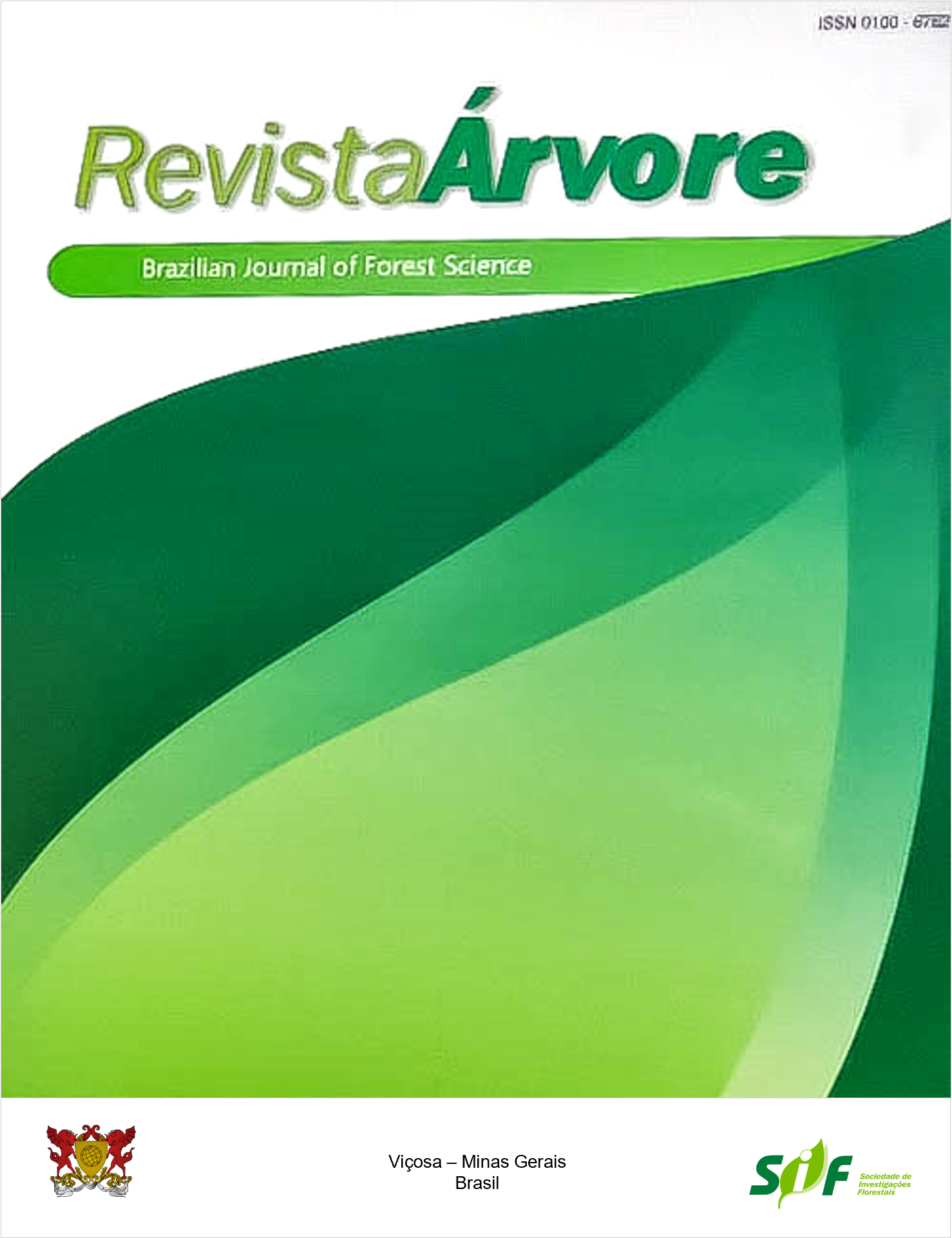TOP GRAFTING TO ACCELERATE SELF-POLLINATION IN Eucalyptus BREEDING
Keywords:
Early flowering, Inbred line, PaclobutrazolAbstract
The top grafting technique can make early flowering possible and consequently accelerate self-pollination in Eucalyptus breeding, reducing the period of each generation. This study aims to establish a methodology to top graft by applying the growth regulator paclobutrazol in self-pollinated Eucalyptus genotypes to induce early flowering and accelerate inbred line strategies. A total of 448 top grafts of seven genotypes (three Eucalyptus urophylla × Eucalyptus grandis hybrids, one Eucalyptus urophylla, and three Eucalyptus grandis) were performed in two periods of the year: July and October. The top grafting samples were evaluated concerning flower induction and graft development at three-month intervals. A t-test was performed with a 5% significance level for type I error to compare the relevance of paclobutrazol application. A fixed model was also used to analyze the significance of the treatments. The fastest blooming occurred after three months of applying the graft methodology. After two years, the top graftings performed in October presented higher flower bud and fruit production. The top grafting affected the induction of self-pollinated Eucalyptus flowers with enough flower buds produced to follow the next cycle of self-pollination in some genotypes. The effectiveness of self-pollinated top graftings varied with the genotype used as the scion. The paclobutrazol improved the flowering of the top grafting samples. The methodology established in this work allows accelerating self-pollination strategies in the globally important industrial crop Eucalyptus.
Keywords: Early flowering; Inbred line; Paclobutrazol
Downloads
Published
How to Cite
Issue
Section
License
Copyright (c) 2022 Revista Árvore

This work is licensed under a Creative Commons Attribution 4.0 International License.
All authors agreed to submit the work to Revista Árvore and granted the exclusive license to publish the article. The authors affirm that it is an original work and has not been previously published elsewhere. The scientific content and opinions expressed in the article are the sole responsibility of the authors and reflect their opinions, not necessarily representing the opinions of the editorial board of Revista Árvore or of the Society of Forest Investigations (SIF).




